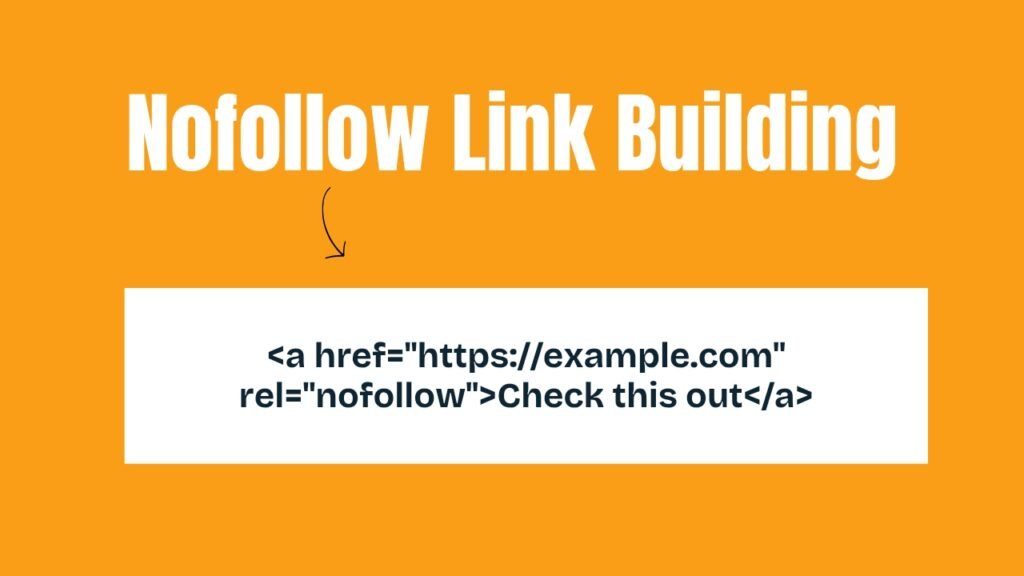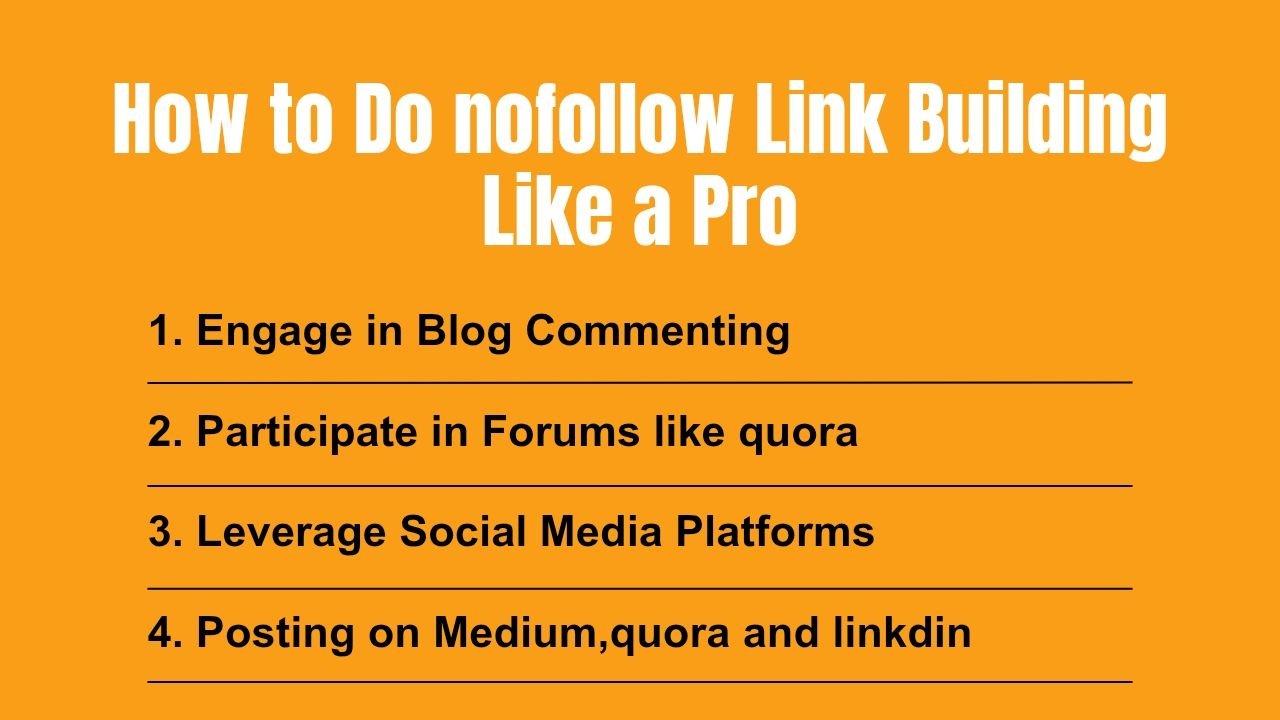
Unlock the secrets of nofollow link building with our comprehensive guide tailored for 2025. As search engine algorithms evolve, mastering the art of nofollow links becomes crucial for effective SEO strategies. Dive into this guide to discover innovative techniques, best practices, and the latest trends that will empower you to harness the full potential of nofollow links in the ever-changing digital landscape.
Understanding the Basics of Nofollow Link Building
If you’re diving into the world of SEO, you’ve probably heard about nofollow links. But what exactly are they, and why should you care? Let’s break it down together.
What Are Nofollow Links?
Nofollow links are a type of hyperlink that tells search engines not to pass on any “link juice” or ranking power to the linked site. They are created by adding attribute to the link. This can be particularly useful when you want to link to a site without endorsing it fully.
Why Use Nofollow Links?
There are several reasons why you might want to use nofollow links:
- Preventing Spam: If you allow user-generated content, like comments, using nofollow links can help prevent spammy sites from gaining SEO benefits.
- Paid Links: Google requires that paid links be marked as nofollow to avoid manipulation of search rankings.
- Untrusted Content: If you’re linking to a site that you don’t fully trust, using a nofollow link can be a safe bet.
How to Implement Nofollow Links
Adding a nofollow attribute is simple. Here’s how you can do it:
Just add rel="nofollow" to your link tag. For example:
<a href="https://example.com" rel="nofollow">Check this out</a>
Practices for Nofollow Link Building
While nofollow links don’t directly impact your site’s ranking, they can still be valuable. Here’s how to make the most of them:
- Balance Your Link Profile: A natural link profile includes both dofollow and nofollow links. Aim for a healthy mix.
- Focus on Quality: Even if a link is nofollow, it can drive traffic and build brand awareness. Prioritize linking to high-quality, relevant sites.
- Engage with Communities: Participate in forums and comment sections where nofollow links are common. This can help you connect with your audience and establish authority.
Understanding nofollow links is crucial for a well-rounded SEO strategy. By using them wisely, you can protect your site, comply with search engine guidelines, and still reap the benefits of increased visibility and traffic.
Importance of Nofollow Link Building in 2025
As we dive into 2025, the landscape of SEO continues to evolve, and the role of nofollow links is more crucial than ever. You might be wondering, “Why should I care about nofollow links?” Well, let me tell you, they are not just about avoiding penalties anymore. They play a strategic role in your overall link-building strategy.
Why Nofollow Links Matter
Nofollow links are essential for a balanced backlink profile. They signal to search engines that while you acknowledge the link, you don’t necessarily endorse the content. This can be particularly useful in:
- Maintaining a natural link profile
- Driving referral traffic from high-authority sites
- Building relationships with other websites
Enhancing Your SEO Strategy with Nofollow Links
Incorporating nofollow links into your strategy can enhance your site’s credibility and trustworthiness. Here’s how:
- Boosting Brand Visibility: Even if a link is nofollow, it can still drive traffic and increase brand awareness.
- Building Authority: Being mentioned on reputable sites, even with a nofollow tag, can enhance your perceived authority.
- Encouraging Natural Links: Engaging content linked with nofollow can lead to natural, dofollow links over time.
Best Practices for Nofollow Link Building
To make the most out of nofollow links, consider these best practices:
- Focus on Quality: Prioritize links from high-authority and relevant sites.
- Engage with Communities: Participate in forums and discussions where nofollow links are common.
- Leverage Social Media: Social platforms often use nofollow links, but they can drive significant traffic.
In summary, while nofollow links may not directly boost your search rankings, they are invaluable for a holistic SEO strategy. By understanding their importance and implementing them wisely, you can enhance your site’s visibility and authority in 2025 and beyond.
How to Do nofollow Link Building Like a Pro

Hey there! If you’re diving into the world of nofollow link building, you’re in the right place. Let’s explore how you can master this essential SEO strategy and boost your website’s authority without breaking a sweat.
Understanding Nofollow Links
First things first, what exactly are nofollow links? These are links with a special attribute that tells search engines not to pass on any “link juice” to the target site. While they don’t directly impact your site’s ranking, they play a crucial role in a balanced link profile.
Why Nofollow Links Matter
So, why should you care about nofollow links? Here are a few reasons:
- They help diversify your backlink profile.
- They can drive traffic from high-authority sites.
- They build relationships with other webmasters and bloggers.
Strategies for Effective Nofollow Link Building
Ready to get started? Here are some strategies to build nofollow links like a pro:
1. Engage in Blog Commenting
Find blogs in your niche and leave thoughtful comments. Make sure your comments add value to the conversation. This not only helps in building nofollow links but also establishes your presence in the community.
2. Participate in Forums
Join forums related to your industry and contribute to discussions. Use your expertise to answer questions and include nofollow links to your site where relevant.
3. Leverage Social Media
Share your content on social media platforms. While these links are typically nofollow, they can drive significant traffic and increase your content’s visibility.
4. Guest Posting
Write guest posts for reputable sites. Even if the links are nofollow, you gain exposure and can attract a new audience.
Monitoring Your Nofollow Links
Once you’ve started building nofollow links, it’s important to monitor their impact. Use tools like Google Analytics to track referral traffic and see which links are driving the most visitors to your site.
Building nofollow links is an art that requires patience and strategy. By engaging with your community, sharing valuable content, and monitoring your progress, you can enhance your site’s authority and reach. Remember, it’s all about quality over quantity. Happy link building!
Advanced Techniques for Nofollow Link Building
As we dive deeper into the world of nofollow link building, it’s essential to explore advanced techniques that can elevate your strategy. Whether you’re a seasoned pro or just starting, these methods can help you build a robust backlink profile while adhering to Google’s E-E-A-T guidelines.
1. Leverage Influencer Collaborations
Partnering with influencers in your niche can be a game-changer. By collaborating on content, you can naturally earn nofollow links from their platforms. Here’s how you can do it:
- Identify influencers who align with your brand values.
- Engage with their content and build a genuine relationship.
- Propose a collaboration that benefits both parties.
Remember, authenticity is key. When you genuinely connect with influencers, the nofollow links you earn will be more valuable.
2. Participate in Industry Forums and Communities
Engaging in industry-specific forums and communities is a fantastic way to build nofollow links. By sharing your expertise, you can naturally include links back to your site. Consider these tips:
- Join forums where your target audience hangs out.
- Contribute valuable insights and answer questions.
- Include nofollow links in your signature or relevant posts.
For example, if you’re in the tech industry, participating in a forum like TechTalk can help you connect with like-minded individuals and earn valuable nofollow links.
3. Utilize Social Media Platforms
Social media is not just for engagement; it’s also a powerful tool for nofollow link building. Here’s how you can make the most of it:
- Share your content on platforms like Twitter, Facebook, and LinkedIn.
- Engage with your audience and encourage them to share your content.
- Use hashtags to increase visibility and reach a broader audience.
By actively participating in social media conversations, you can drive traffic to your site and earn nofollow links organically.
4. Create Shareable Infographics
Infographics are a visual treat and can be a magnet for nofollow links. Here’s how to create infographics that get shared:
- Focus on trending topics in your industry.
- Ensure your infographic is visually appealing and informative.
- Encourage others to share it with a link back to your site.
For instance, an infographic on SEO Trends for 2025 can attract attention and earn you valuable nofollow links.
By implementing these advanced techniques, you can enhance your nofollow link building strategy and boost your site’s authority. Remember, the key is to provide value and build genuine connections.
Real-World Applications for Nofollow Link Building
When it comes to mastering nofollow link building, understanding its real-world applications can make a significant difference in your SEO strategy. Let’s dive into how you can effectively use nofollow links to enhance your online presence.
Enhancing Brand Visibility
Nofollow links can be a powerful tool for increasing your brand’s visibility. By engaging with high-traffic platforms and leaving thoughtful comments or guest posts, you can attract attention to your brand without worrying about search engine penalties.
Building Relationships and Networking
One of the most valuable aspects of nofollow link building is the opportunity to build relationships within your industry. By contributing to discussions and sharing insights, you can connect with influencers and potential partners. This can lead to more opportunities for collaboration and growth.
Driving Targeted Traffic
While nofollow links don’t directly impact your search rankings, they can drive targeted traffic to your site. By placing links in relevant forums or social media platforms, you can attract users who are genuinely interested in your content or products.
Practical Tips for Effective Nofollow Link Building
- Engage in relevant online communities where your target audience hangs out.
- Contribute guest posts to reputable blogs in your niche.
- Participate in Q&A sites like Quora to share your expertise.
- Leverage social media platforms to share valuable content.
Internal Linking for Better User Experience
While focusing on nofollow links, don’t forget the power of internal linking. By strategically linking to related content on your site, you can improve user experience and keep visitors engaged longer.
In conclusion, nofollow link building is not just about SEO; it’s about building a robust online presence. By applying these strategies, you can enhance your brand’s visibility, drive targeted traffic, and foster valuable relationships. Remember, the key is to be genuine and provide value in every interaction.
Examples Of Nofollow Link Building
When it comes to mastering nofollow link building, understanding practical examples can be a game-changer. Let’s dive into some effective strategies that you can start implementing today.
1. Guest Blogging
Guest blogging is a fantastic way to build nofollow links while sharing your expertise. When you contribute to reputable blogs, you often get a chance to include a nofollow link back to your site. This not only boosts your visibility but also establishes your authority in the field. For instance, if you write a guest post on a tech blog, you might include a link like Tech Innovations to direct readers to your related content.
2. Social Media Profiles
Social media platforms are a goldmine for nofollow links. By adding your website link to your profiles on platforms like Twitter, LinkedIn, or Instagram, you create valuable nofollow links that can drive traffic and enhance your online presence. Remember, consistency is key, so ensure your profiles are up-to-date and engaging.
3. Blog Comments
Engaging in meaningful discussions in the comments section of popular blogs can also help you build nofollow links. When you leave insightful comments, you can often include a nofollow link back to your site. Just make sure your comments add value to the conversation and are not spammy.
4. Forum Participation
Participating in forums related to your niche is another effective way to build nofollow links. By contributing valuable insights and linking back to your content where relevant, you can attract a targeted audience. For example, if you’re active in a digital marketing forum, you might share a link like SEO Strategies to guide users to your detailed guide.
5. Online Directories
Submitting your website to online directories can also generate nofollow links. While not all directories are created equal, focusing on reputable ones can enhance your site’s visibility. Ensure your business information is accurate and consistent across all directories.
- Guest Blogging
- Social Media Profiles
- Blog Comments
- Forum Participation
- Online Directories
By incorporating these strategies, you can effectively build nofollow links that enhance your site’s authority and drive traffic. Remember, the key is to focus on quality and relevance, ensuring that each link adds value to your audience.
Summary & Recommendations for Nofollow Link Building
As we wrap up our journey through mastering nofollow link building, let’s distill the key takeaways and actionable recommendations. Whether you’re a seasoned SEO expert or just starting, these insights will help you navigate the evolving landscape of link building in 2025.
Key Takeaways
- Understanding Nofollow: Nofollow links are essential for a balanced link profile. They signal to search engines that a link should not influence the ranking of the linked site.
- Strategic Use: Use nofollow links to connect with high-authority sites without passing link equity, especially in user-generated content or paid links.
- Google’s Perspective: Google treats nofollow links as hints rather than directives, which means they can still impact your site’s visibility indirectly.
Actionable Recommendations
To effectively incorporate nofollow links into your strategy, consider the following:
- Diversify Your Link Profile: Aim for a natural mix of dofollow and nofollow links. This diversity can enhance your site’s credibility and trustworthiness.
- Engage with High-Quality Content: Focus on creating valuable content that naturally attracts nofollow links from reputable sources.
- Monitor Your Links: Regularly audit your link profile to ensure a healthy balance. Tools like Google Search Console can be invaluable for this task.
- Build Relationships: Engage with industry influencers and authoritative sites. Even if the links are nofollow, the exposure and potential traffic can be beneficial.
Final Thoughts
In the ever-evolving world of SEO, staying informed and adaptable is key. By understanding and strategically using nofollow links, you can enhance your site’s authority and visibility. Remember, it’s not just about the links themselves but the relationships and content that drive them.
